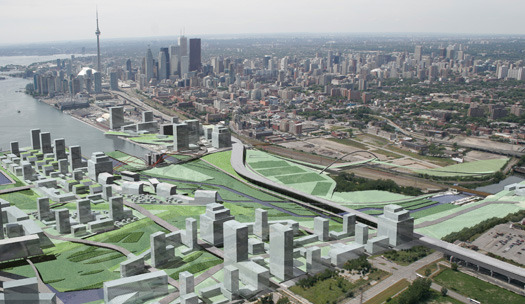The city of Toronto, Ontario, in Canada is probably one of the best city in the world. People, business, restaurants, art, culture and flavors are the key essence to modern life and this city has it. Beside the cold winter weather and the random blizzards you can experience, Canada is as pleasant as knowing that you are travelling into a country of amazing people and atmosphere.
The city is big and it keeps growing horizontally and vertically, but the vertical way has been recently in the spot for the presence of major building in the downtown core that had left the mark of something better.
The metropolis is located on the lake Ontario developing a series of municipalities that orbit around Toronto, both politically and municipally. Water is one of the most essential part of Toronto and Canada, it is every where and it is important! So much important that city hall has been reconsidering the shape of the waterfront for may years.
The waterfront, the key reference point of every city that has been built on the coast of a lake, river or sea.
The water front is the presence and life of Ontario's water commerce ever since the 18th century, but lately it has been the topic of discussion at city hall. The new development calls for a major overhaul of the south downtown portion of the city in contact with the lake to boost its look and structure. The major presence of silos that used to host wheat, grains and other food is a major problem because there is a major portion to be rebuilt according with the major styles and will of the city.
According to the waterfront website these are the main point in which the areas wil be developed into:
- Reducing urban sprawl
- Developing sustainable communities particularly in the area of energy efficiency
- Redeveloping brownfields & cleaning up contaminated land
- Building more affordable housing
- Increasing economic competitiveness
- Creating more parks and public spaces
Circled in red are the three main areas that seek an overhaul to give the city a face lift.
The Gardiner Expressway that divides the downtown core from the waterfront, is scheduled to be buried underground to help the city southern side become one.
The current area of interest under development or under project
There is lots to build and lots to change because the city waterfront remained almost unchanged. There is a very clear difference that the front has: you can instantly walk into underdeveloped areas within few blocks without noticing. That's why the massive highway and train system that separates downtown from the waterfront has always divided the city, creating areas where nothing has been built for many decades.
Projects to be made and already made
It is unknown what will be the actual projects that the city of Toronto will see. Some are just on paper while others are under construction and other under approval. Here some examples of proposed works from various architect firms.
This is the project by Moshe Sadfie for the East Bayfront residential complex, the same firm that designed the new Pearson International Airport in Toronto and the new opera house.
In a way there is that feeling that the architects and designers have the European croissetes in mind when they thought about new ideas for the waterfront. It is actually a brilliant idea to develop zones for people to walk in so to reduce traffic and to promote fitness and sports event right in the hearth of the city. This can settle an example for Toronto's citizens to improve their health walking or running rather than using their cars everywhere.
Another project to bring together fun activities and the people, without limiting them in any specific areas.
A proposed project to develop the dock area and turn it into a more greener place with parks, recreational areas, commerce and residential zones. All this patches of waterfront that need to be renewed are tied together by the Gardiner Expressway where the eastern portion is under studies for a possible termination, upgrade or a remaining of the whole structure.
The Wave Bridge in the central part of the waterfront is already a reality, it is essential to design the whole project with unique and innovative architecture that will publicize Toronto by itself. There are great potential to reshape the city into a world example in leading sustainability in the urbanization process.
The whole restructuring of the Toronto waterfront is a major challenge that required also the help of the Province as well as the one from the capital Ottawa. Some obstacles in the developing are the silos who are now inactive and that were used in the 20th century to stock grains. These buildings have a massive area of foundations that were built with reinforced concrete and are difficult to dismantle due to their robust composition. Other projects want the conversion of these silos into commercial areas rather than their whole demolition.
Many citizens wish this new project isn't just about creating a massive commercial area, but rather a blend of everything that can give people the choice to spend their time at the waterfront. The creation of museums, schools, campuses and other cultural structure has the potential of boosting Toronto's image not just for it's commerce but also for it's design and arts.












No comments:
Post a Comment